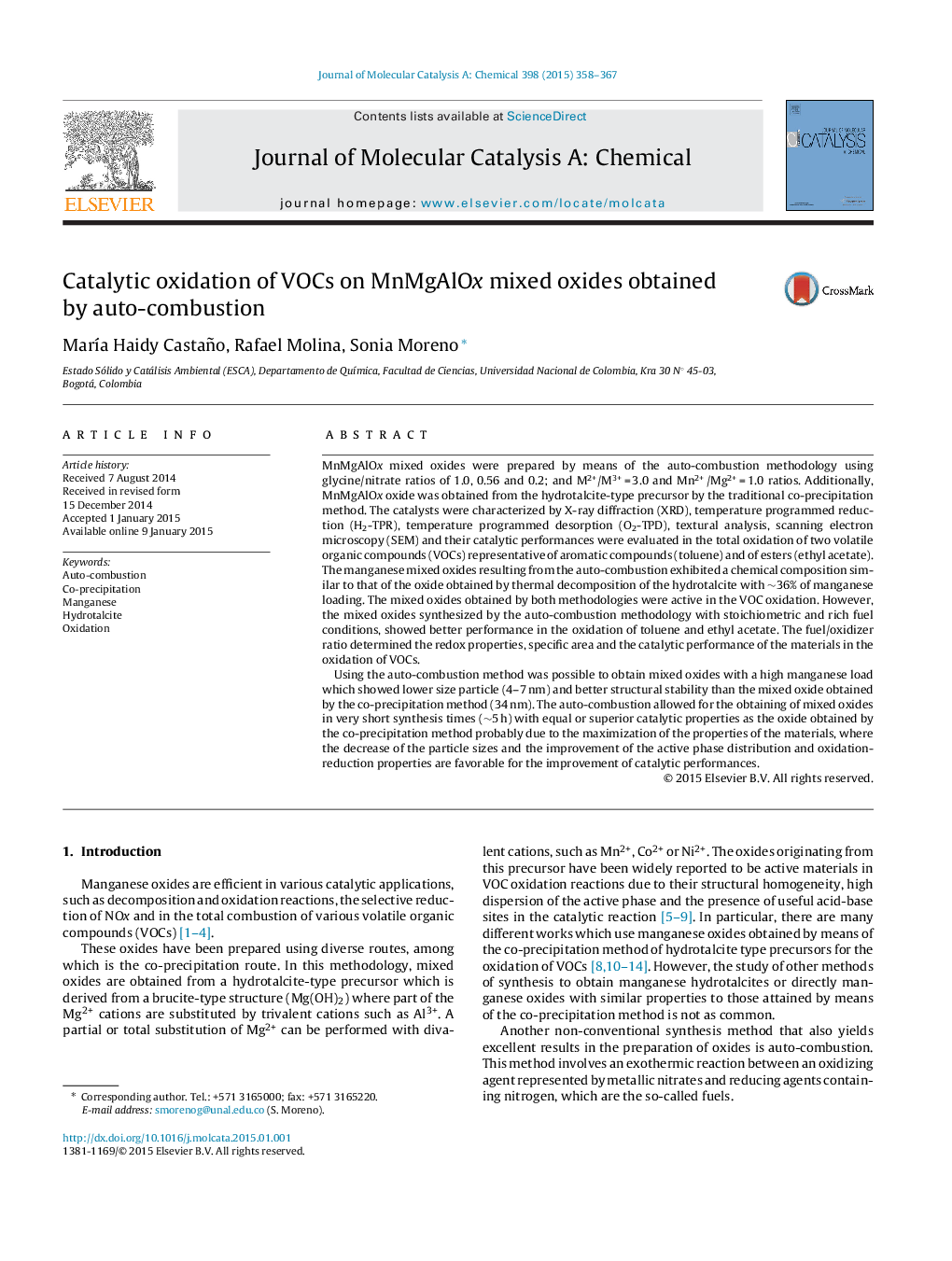| Article ID | Journal | Published Year | Pages | File Type |
|---|---|---|---|---|
| 65234 | Journal of Molecular Catalysis A: Chemical | 2015 | 10 Pages |
•Mn–Mg–Al–O was prepared by auto-combustion and co-precipitation methods.•Fuel/oxidant ratio affects the textural, morphological, redox and catalytic properties.•Auto-combustion method changes the particle size and improves the redox properties.•Good catalytic behavior of auto-combustion catalysts for toluene and ethyl acetate oxidation.
MnMgAlOx mixed oxides were prepared by means of the auto-combustion methodology using glycine/nitrate ratios of 1.0, 0.56 and 0.2; and M2+/M3+ = 3.0 and Mn2+ /Mg2+ = 1.0 ratios. Additionally, MnMgAlOx oxide was obtained from the hydrotalcite-type precursor by the traditional co-precipitation method. The catalysts were characterized by X-ray diffraction (XRD), temperature programmed reduction (H2-TPR), temperature programmed desorption (O2-TPD), textural analysis, scanning electron microscopy (SEM) and their catalytic performances were evaluated in the total oxidation of two volatile organic compounds (VOCs) representative of aromatic compounds (toluene) and of esters (ethyl acetate). The manganese mixed oxides resulting from the auto-combustion exhibited a chemical composition similar to that of the oxide obtained by thermal decomposition of the hydrotalcite with ∼36% of manganese loading. The mixed oxides obtained by both methodologies were active in the VOC oxidation. However, the mixed oxides synthesized by the auto-combustion methodology with stoichiometric and rich fuel conditions, showed better performance in the oxidation of toluene and ethyl acetate. The fuel/oxidizer ratio determined the redox properties, specific area and the catalytic performance of the materials in the oxidation of VOCs.Using the auto-combustion method was possible to obtain mixed oxides with a high manganese load which showed lower size particle (4–7 nm) and better structural stability than the mixed oxide obtained by the co-precipitation method (34 nm). The auto-combustion allowed for the obtaining of mixed oxides in very short synthesis times (∼5 h) with equal or superior catalytic properties as the oxide obtained by the co-precipitation method probably due to the maximization of the properties of the materials, where the decrease of the particle sizes and the improvement of the active phase distribution and oxidation-reduction properties are favorable for the improvement of catalytic performances.
Graphical abstractFigure optionsDownload full-size imageDownload high-quality image (198 K)Download as PowerPoint slide
